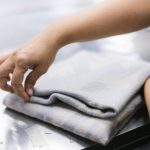Is Dry Cleaning Toxic?
In our fast-paced world, dry cleaning has become an essential service for maintaining our wardrobes. Yet, a question often lingers in the air: is dry cleaning toxic? This comprehensive exploration seeks to uncover the truths and myths surrounding dry cleaning, its potential hazards, and the advancements in safer, eco-friendly alternatives.
The History and Evolution of Dry Cleaning
Dry cleaning has a storied history dating back to the 19th century. The process was originally discovered by accident when a spilled lamp oil surprisingly removed stains from a fabric. Over time, this technique evolved into a sophisticated industry primarily using solvents like perchloroethylene (perc). Perc became the go-to solvent due to its effectiveness in cleaning without damaging delicate fabrics. However, as awareness of environmental and health impacts grew, the search for safer alternatives began.
The Mechanics of Traditional Dry Cleaning
Traditional dry cleaning might sound like an oxymoron, as it involves liquids—specifically, chemical solvents. Clothes are placed in a machine that looks similar to a conventional washing machine but functions differently. Instead of water and detergent, perc or another solvent is used to dissolve dirt and stains. The process is effective, but it has raised concerns due to the chemical residues it can leave on fabrics and its potential health impacts.

Health Concerns Linked to Dry Cleaning
The primary concern with traditional dry cleaning centers around perc. Classified as a hazardous air pollutant by the U.S. Environmental Protection Agency, perc has been linked to various health issues. Prolonged exposure can lead to symptoms like dizziness, headaches, and respiratory problems. In severe cases, it has been associated with more serious conditions such as kidney and liver damage. Given these risks, both consumers and workers in the dry cleaning industry have raised alarms about prolonged exposure to this chemical.
Environmental Impact of Dry Cleaning
Beyond health concerns, the environmental impact of dry cleaning cannot be ignored. Perc is a volatile organic compound that contributes to air pollution and can contaminate soil and groundwater if not disposed of properly. The dry cleaning process also involves energy-intensive machines, contributing to a larger carbon footprint. These environmental drawbacks have prompted a significant push towards more sustainable practices within the industry.
Emergence of Eco-Friendly Alternatives
In response to the toxicity of traditional dry cleaning, the industry has seen a rise in eco-friendly alternatives. One such innovation is the use of liquid silicone, which is gentler on fabrics and the environment. Unlike perc, liquid silicone breaks down into harmless sand, water, and carbon dioxide. Another alternative is the use of wet cleaning, a method that employs water and biodegradable detergents, combined with sophisticated machines to prevent damage to delicate fabrics.
The Shift Towards Safer Cleaning in Singapore
A study conducted by the National University of Singapore in 2022 examined the effectiveness and safety of various dry cleaning methods. The study found that eco-friendly solvents like liquid silicone provided comparable cleaning results to traditional perc without the associated health risks. Another research project by the Singapore Environment Council highlighted consumer preferences shifting towards green dry cleaning services, noting a 30% increase in demand for eco-friendly options over the past five years.
Consumer Awareness and Choices
Today’s consumers are more informed and environmentally conscious than ever before. This shift has driven the dry cleaning industry to adopt safer practices and transparently communicate the benefits of their methods. As customers become more aware of the potential dangers of traditional dry cleaning, they are increasingly opting for services that prioritize health and environmental sustainability.
Practical Tips for Safer Dry Cleaning
For those concerned about the potential toxicity of dry cleaning, there are practical steps you can take. First, choose a dry cleaner that uses eco-friendly solvents. Look for certifications or labels that indicate green practices. Additionally, ensure proper ventilation when storing and handling dry-cleaned garments to minimize exposure to any residual chemicals. Understanding the cleaning process and asking questions about the solvents used can also help you make more informed choices.
The Role of Industry Leaders in Promoting Safe Practices
Industry leaders play a crucial role in shaping the future of dry cleaning. By adopting and promoting eco-friendly practices, they can lead by example and drive wider industry change. Innovative companies that invest in green technologies not only contribute to a healthier environment but also gain a competitive edge by meeting the growing demand for sustainable services.
Conclusion
So, is dry cleaning toxic? Traditional methods using solvents like perc pose significant health and environmental risks. However, the industry is evolving, with safer, eco-friendly alternatives becoming more prevalent. By choosing services that prioritize non-toxic methods, consumers can enjoy the benefits of dry cleaning without compromising their health or the planet.
If you’re ready to embrace safer and more sustainable dry cleaning practices, visit For the Love of Laundry today. Discover our eco-friendly solutions and learn more about our commitment to protecting both your wardrobe and the environment. For specialized curtain cleaning services, explore our offerings at Curtain Cleaning.
Click on the link to find out more about For the Love of Laundry services. Chat with our representatives today!
About For the Love of Laundry
Dry Cleaning
Leather Cleaning
Laundry Pick Up and Delivery




